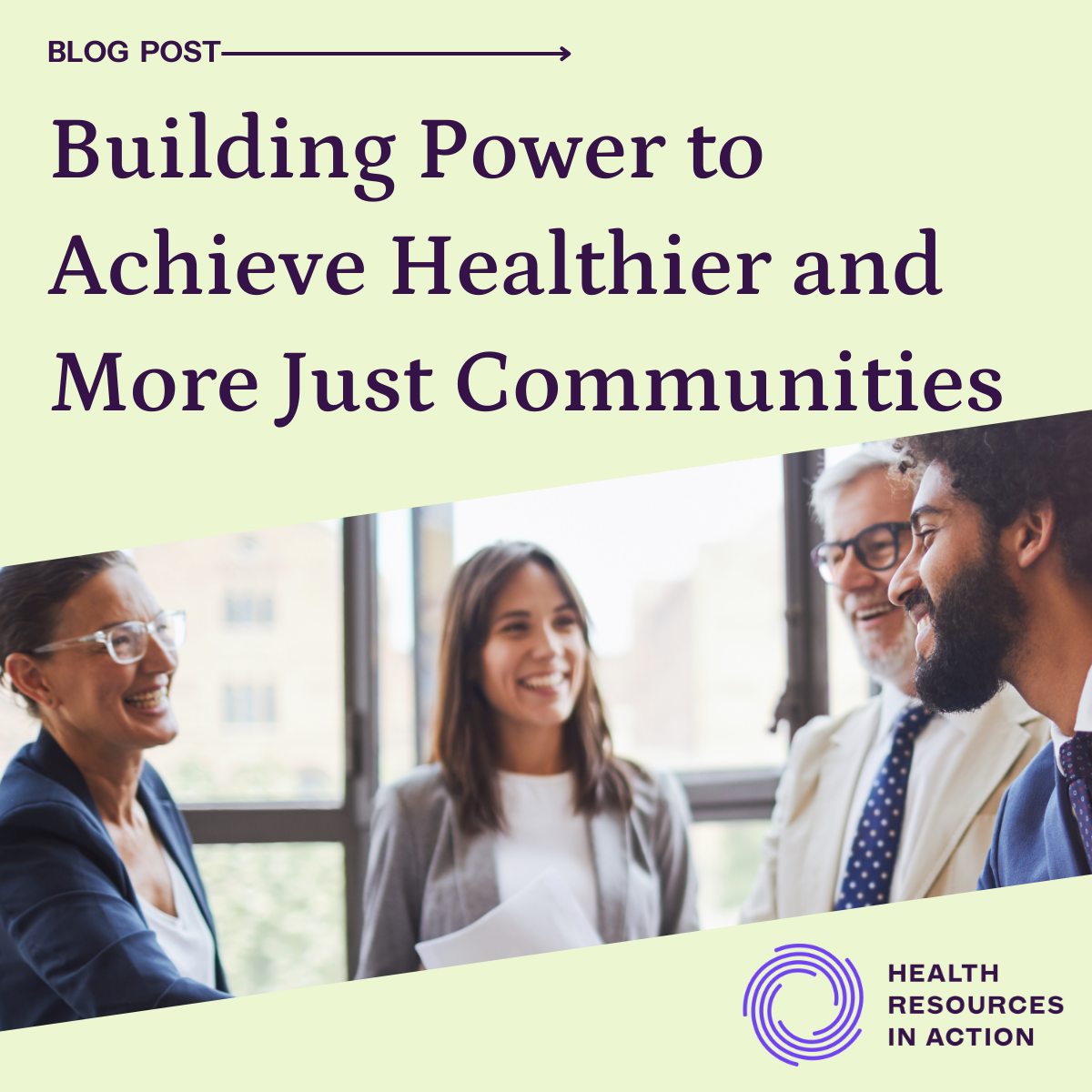
Power lies at the heart of health and racial justice, shaping our society’s structures. It determines access to resources, who makes decisions, who thrives, and who is left behind. Those who hold formal power within a system, such as elected or appointed officials, can leverage, shift, or build power. Historically, those “outside” of a governmental system, such as community residents, advocates, and community-based organizations, have less access to the formal power needed to create impact. Acknowledging these power imbalances is the first step toward transformative change.
Advocacy serves as a catalyst for building power within communities, challenging oppressive systems, and advancing equity. Significant amounts of federal, private, and philanthropic dollars are available to invest in the resources that address systemic disparities, support community-led initiatives, and enable community-led decision-making. Shifting power to those impacted leads to healthier and more equitable communities.
This post introduces the concept of power, the importance of building sustained power within communities, and the example of using federal funding to support community transformation efforts.

Figure 1: Expressions of Power. Source: Foundations of Community Engagement. Based on the Sustaining Community blog. www.engagementforequity.org.
Defining Power and Its Implications for Health and Racial Justice
Martin Luther King, Jr. stated, “Power, properly understood, is the ability to achieve purpose.” Power is an inherent element of society, influencing our lives in profound ways. Power influences our institutions, systems, and policies. The many expressions of power, as discussed in the blog and reflected in the , help us to imagine power’s potential to achieve just or harmful outcomes. Health and social inequities including access to quality healthcare, education, employment opportunities, and safe environments are the result of power being used to oppress groups of people. Oppression, by nature, benefits one group over another through systematic subjugation. Figure 1 calls this “power over,” and states it is built on control and fear. On the other hand, every individual holds the “power to” act in any number of ways and possesses the “power within” to imagine change and improve on the present. Effective advocacy that builds power is the expression of “power with,” the power that emerges when people come together and share resources and ideas toward a common cause. It is this “power with” — this collective action –that holds the greatest potential to address the root causes of health inequities and lead to systems transformation.
Advocacy’s Role in Building Power
This post is inspired by the Center for Evaluation Innovation and the California Endowment “” report. “Policy wins,” a concept from this report, refers to traditionally celebrated indicators of success in public health and social justice such as securing funding, passing legislation, or changing local regulations. These wins alone often fail to address the systemic conditions underlying health and social disparities. They are also susceptible to attacks and reversals. However, “power-wins,” – as introduced in Advocacy that Builds Power – goes a step further. They involve sustained efforts to equitably meet the needs of impacted communities. Power wins are developed and informed by impacted communities, centered in strategic planning, grounded in addressing root causes and inequity. Power wins are characterized by continuous effort. While policy wins are certainly important, it is critical to examine and pursue advocacy strategies that are required for long-term change and systems transformation.
A significant avenue for facilitating community advocacy and power wins is through federal funding initiatives. An example of this is the American Rescue Plan Act (ARPA). ARPA has the potential to serve as a powerful tool in addressing health and racial disparities by emphasizing and demonstrating the value and impact of engaging residents in decision making about community investments. ARPA POWER (People Organizing and Working for Equitable Recovery), an HRiA initiative supported by the Barr Foundation, invests in power-building advocacy efforts that may lead to short-term “wins” and pave the way to sustained efforts that equitably meet the needs of impacted communities. As the Advocacy that Builds Power report explains, “[w]hen organizing is not at the center of the work, wins can be achieved, but the amount of power expansion that occurs might be limited.” ARPA POWER raises awareness and provides direct support to grassroots efforts, enabling communities to shape public investments supported by ARPA dollars and drive meaningful change.
For instance, in areas such as the Berkshires and the City of Everett, HRiA has allocated financial resources, dedicated staff time, and offered infrastructure support, all while sustaining long-term organizing and advocacy efforts.
-

Figure 2. Everett youth celebrate their $1M allocation
In Everett, the city government recently voted to allocate $1M to a youth-led participatory budgeting process. HRiA provided coaching to the youth organizers on organizing tactics and municipal leader engagement, support with communication tools, and best practice research related to participatory budgeting.
- In the Berkshires, HRiA provided technical and logistical support to a coalition of community-based organizations. The collective effort created an infrastructure to support organizations who historically have not had the capacity to compete for significant grant funding, and now offers technical assistance and a funding “clearinghouse” website for diverse sectors.
The Path Forward: Building Community Power
Transforming inequitable systems requires employing strategies that are designed to build community power. We envision a future where public health investments are guided by equitable community engagement. Equipped with the necessary knowledge, resources, and tools, everyone – from advocates to community-based organizations to municipal employees and elected officials – can challenge inequitable systems and foster lasting change.
